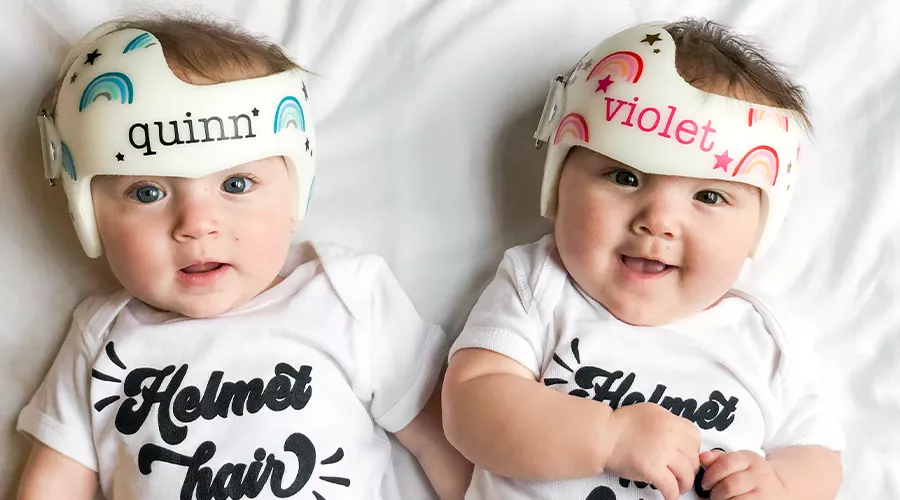

Plagiocephaly, also known as baby flat head syndrome, is when a baby's head has a flat spot or is misshapen.
It's caused by prolonged pressure to the skull from the baby spending a lot of time on their back or other factors like positioning in the womb.
Download Resource: A Parent's Guide to Plagiocephaly
The condition is common and estimated to affect approximately 1 in 2 (47%) infants¹. Where 1 in every 4 babies¹ have severe cases. When the head shape is determined to be moderate to severe, experts will recommend helmet therapy for treatment.
Plagiocephaly head shapes can range from mild to severe and even occur in combination with one another. Here are some common characteristics of each:
Parents spend so much time with their baby, recognizing an abnormal head shape can sometimes be difficult. Below are some examples of mild to severe plagiocephaly and brachycephaly, along with a normal head shape for comparison.


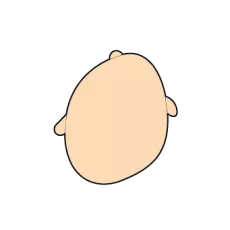
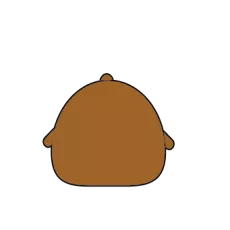

Babies’ heads are soft and therefore sensitive to external forces — even gentle ones.
Whether in the womb or in the baby's daily routine, these forces applied to the baby's skull can cause deformity.
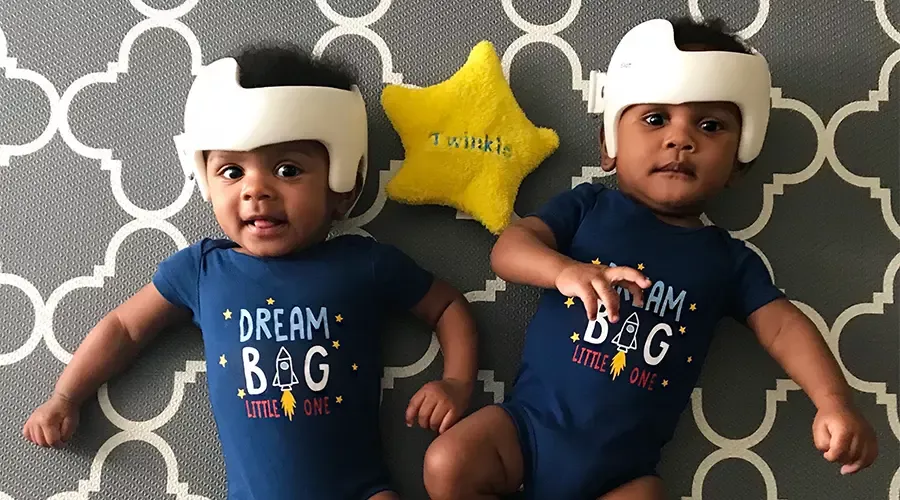
![]()
The relationship between back-sleeping and plagiocephaly in infants is well-documented. Prolonged pressure applied to the back of the skull during sleep can result in flattening.
![]()
Convenience Devices restrict the baby's natural movement and/or contribute to prolonged periods of time on their backs. Some examples of these devices include car seats, "smart" sleepers, automatic rockers, strollers, etc.
![]()
Congenital Muscular Torticollis (CMT) is a condition in which the neck muscles are abnormally tight on one side. Torticollis causes the head to tilt toward the tightness and rotate away from it.
![]()
Premature babies have especially soft skulls, making them even more susceptible to misshaping. These babies often spend extended periods in NICU with the head in a fixed position. Premature babies also have a higher likelihood of experiencing physical delays, which can hinder the normal movement of the head.
![]()
Babies who become stuck in a singular position in the womb are at risk of developing plagiocephaly. A breech orientation can also lead to an abnormal head shape.
![]()
Plagiocephaly is common in cases of multiples where limited space in utero can lead to distortion of the head.
Frequently asked questions
Flat spots can develop quickly in infants due to rapid skull growth, sometimes in as little as one week. This early period is the most effective time for treatment, as it coincides with most head growth, promoting optimal treatment outcomes.
| Age | Average Time to Treat |
|---|---|
| <4 months | 5-7 weeks |
| 4 months | 6-9 weeks |
| 5 months | 8-10 weeks |
| 6 months | 2.5-3.5 months |
| >7 months | 3.5-4 months |
Plagiocephaly is not known to cause any lasting or harmful effects on your baby’s neurological development.
While repositioning can sometimes correct mild flatness in babies up to four months old, research has shown that moderate to severe plagiocephaly is not likely to self-correct.
But there is some complexity to this and we must also grasp why age is a significant factor with treatment.
At a young age, it's completely natural for babies to have very soft skulls. In fact, the baby having a malleable skull allows it to be flexible enough to fit easily through the birth canal.
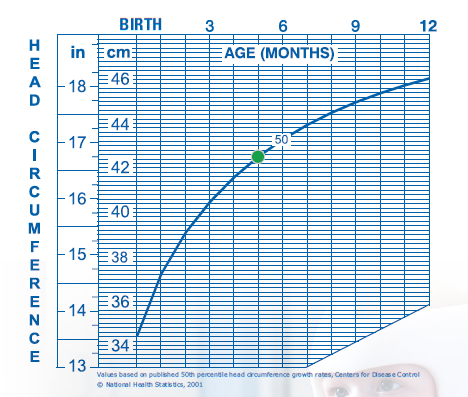
National Health Statistics, 2001
Your baby's head will begin to grow with age, however, the skull will also harden as time continues. A baby's head doubles in size within the first 6 months of age. The brain growth slows significantly by 2 years of age, and the head shape mostly sets for life.
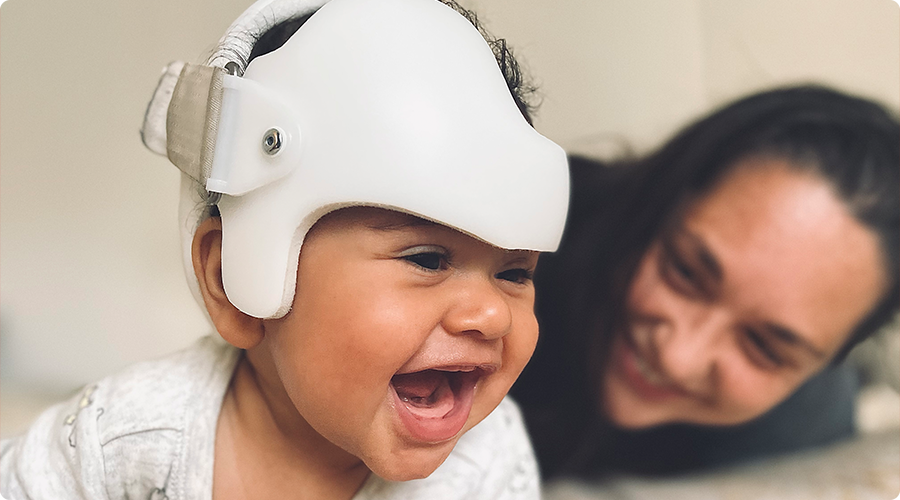
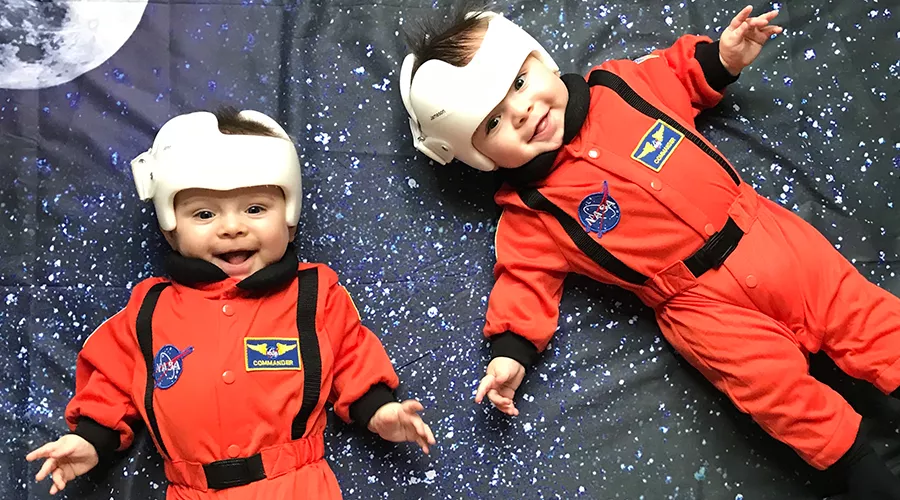
Foremost, it's important to understand if your baby's flat spots are because of a positional deformity. In other words, if pressure to the head is what causes their flat spots.
Your provider can examine your baby's head shape or you can go to a plagiocephaly treatment clinic for an evaluation.
Tummy time is a simple countermeasure that reduces the amount of time the baby spends on their back. Parents practice this while the baby is awake and encourage them to lift their heads.
It helps them develop core motor skills and the strength necessary to begin rolling over, crawling, and eventually standing up. It also allows your baby to move their head on their own without assistance needed from a parent or guardian.
Repositioning involves turning their head while sleeping or in a convenience device (i.e. strollers or car seats). This is especially helpful if your baby favors a particular side of the head while in a sleeping position.
For instance, your baby may favor a particular side while they're sleeping. Repositioning helps reduce the risk of flat spots and also prevents additional pressure put onto one that may already exist.
Similar to tummy time, this helps reduce pressure to parts of the head with flat spots. It also allows your baby to spend less time in restrictive devices that could be the cause of their condition.
Cranial orthotics are devices that help to reshape the infant’s head and bring back normal curvature.
Generally, experts recommend helmet therapy for babies when:
There has not been any improvement to the flat spots over time, or after repositioning, tummy time, and/or physical therapy
They are between 4-6 months and the flat spot(s) have not improved over time
They are older than 4-6 months and have a form of plagiocephaly considered moderate to severe
They are older than 6 months and the flat spot(s) persist
The latest studies show that nearly 1 in 2 (47%) infants today have some degree of plagiocephaly. 1 in 10 babies have a severe enough degree that experts would recommend treatment with a cranial orthotic.
Simple at-home practices including supervised tummy time and repositioning techniques are known to prevent and improve abnormal head shapes up until about four months of age. Additionally, limiting the use of convenience devices, such as car seats, infant carriers and swings, is also recommended.
You can follow our at-home assessment to get a better understanding of your baby’s head shape.
Please note that this assessment is not meant to replace the diagnosis of a medical professional. If you’re concerned about your baby’s head shape, you can schedule a no-cost evaluation at the clinic location nearest you.